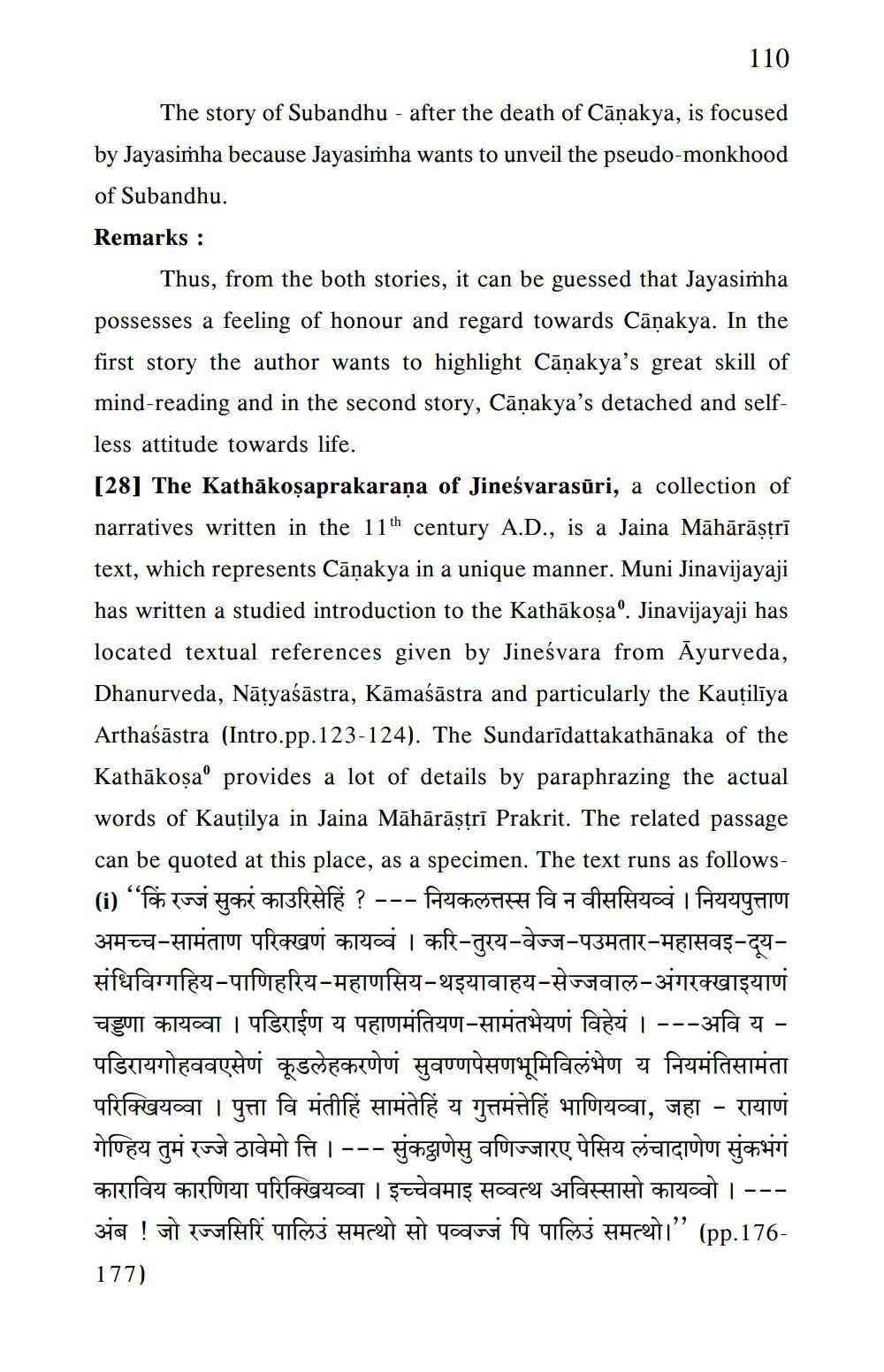________________
110
The story of Subandhu - after the death of Cāņakya, is focused by Jayasimha because Jayasimha wants to unveil the pseudo-monkhood
of Subandhu.
Remarks :
Thus, from the both stories, it can be guessed that Jayasimha possesses a feeling of honour and regard towards Cāņakya. In the first story the author wants to highlight Cāņakya's great skill of mind-reading and in the second story, Cāņakya's detached and selfless attitude towards life. [28] The Kathākosaprakarana of Jinesvarasāri, a collection of narratives written in the 11th century A.D., is a Jaina Maharastri text, which represents Cāņakya in a unique manner. Muni Jinavijayaji has written a studied introduction to the Kathākosao. Jinavijayaji has located textual references given by Jineśvara from Ayurveda, Dhanurveda, Nāțyaśāstra, Kāmaśāstra and particularly the Kauțilīya Arthaśāstra (Intro.pp.123-124). The Sundarīdattakathānaka of the Kathākoșa' provides a lot of details by paraphrazing the actual words of Kautilya in Jaina Māhārāstrī Prakrit. The related passage can be quoted at this place, as a specimen. The text runs as follows(i) “किं रज्जं सुकरं काउरिसेहिं ? --- नियकलत्तस्स वि न वीससियव्वं । निययपुत्ताण अमच्च-सामंताण परिक्खणं कायव्वं । करि-तुरय-वेज्ज-पउमतार-महासवइ-दूयसंधिविग्गहिय-पाणिहरिय-महाणसिय-थइयावाहय-सेज्जवाल-अंगरक्खाइयाणं चड्डणा कायव्वा । पडिराईण य पहाणमंतियण-सामंतभेयणं विहेयं । ---अवि य - पडिरायगोहववएसेणं कूडलेहकरणेणं सुवण्णपेसणभूमिविलंभेण य नियमंतिसामंता परिक्खियव्वा । पुत्ता वि मंतीहिं सामंतेहिं य गुत्तमंत्तेहिं भाणियव्वा, जहा - रायाणं गेण्हिय तुमं रज्जे ठावेमो त्ति । --- सुकट्ठाणेसु वणिज्जारए पेसिय लंचादाणेण सुंकभंग काराविय कारणिया परिक्खियव्वा । इच्चेवमाइ सव्वत्थ अविस्सासो कायव्वो । --- अंब ! जो रज्जसिरिं पालिउं समत्थो सो पव्वज्जं पि पालिउं समत्थो।” (pp.176177)




